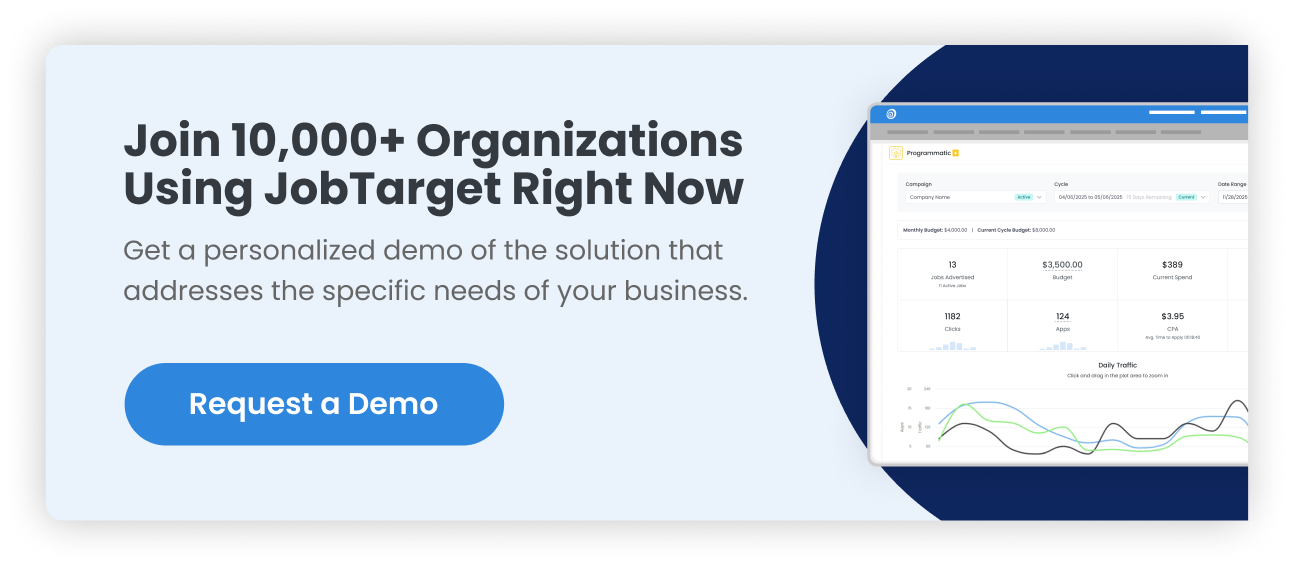Imagine this scenario: Your emergency department is operating with a 20% nursing shortage. Every shift, your existing staff is stretched thin, working mandatory overtime that's pushing them toward burnout. You've posted the open RN positions on your usual job board three weeks ago, but you're still waiting for qualified applicants while patient satisfaction scores decline and staff turnover accelerates.
Meanwhile, across town, another hospital system filled similar positions in just 18 days using a completely different recruitment approach.
What's the difference? Strategic job distribution.
Healthcare recruiting operates in a uniquely challenging environment. Unlike other industries grappling with candidate oversupply, healthcare faces persistent talent shortages where demand for skilled professionals continues to outpace supply. Hospitals, medical groups, and medical staffing agencies find themselves under immense pressure to fill critical roles quickly, yet traditional recruitment approaches consistently fall short.
Healthcare recruiting is unlike any other sector. While demand for skilled professionals continues to outpace supply, hospitals, medical groups, and medical staffing agencies are under immense pressure to fill critical roles—fast. Yet, data shows that time-to-fill in healthcare often ranges from 40 to 90 days for most positions, with some exceeding 100 days. For organizations where every day a role remains vacant impacts patient care and revenue, optimizing your recruitment approach is critical.
Why Time-to-Fill Matters: The True Cost of Healthcare Vacancies
Extended time-to-fill in healthcare isn't merely an inconvenience—it's a major cost driver that affects every aspect of your organization's performance. The financial implications are staggering and often underestimated by leadership:
- Average healthcare position fill time: 49 days (compared to 36 days across all industries)
- Physician vacancies: Can last up to 195 days, costing $7,000–$9,000 per day in lost revenue
- Hospital turnover losses: Average $4.75 million annually per hospital
These aren't just statistics—they represent real money leaving your organization every day a position remains unfilled. A single physician vacancy lasting the industry average of 195 days costs between $1.36 million and $1.75 million in lost revenue alone. That's before considering the additional costs of locum tenens, overtime for existing staff, and the inevitable turnover that occurs when teams are consistently understaffed.
The ripple effects extend far beyond empty chairs in staff meetings, impacting patient care quality, staff morale, and your organization's reputation in the community.
The Operational Consequences
Beyond direct financial costs, extended time-to-fill creates operational challenges that compound over time:
- Patient Care Impact: Understaffed departments struggle to maintain quality standards. Longer wait times, reduced patient satisfaction scores, and increased risk of medical errors all stem from inadequate staffing levels.
- Staff Burnout Acceleration: When positions remain vacant for months, existing staff members bear the burden through mandatory overtime, increased patient loads, and higher stress levels. This creates a vicious cycle where burnout leads to more turnover, which leads to more vacant positions.
- Revenue Cycle Disruption: Many healthcare organizations reduce services or limit patient admissions when unable to maintain adequate staffing levels. This directly impacts revenue generation and market competitiveness.
- Reputation Damage: Extended vacancies affect your organization's reputation among both potential employees and patients. Healthcare professionals talk, and word spreads quickly about organizations struggling to maintain adequate staffing.
The Competitive Disadvantage
In healthcare's candidate-driven market, time-to-fill directly impacts your ability to compete for the best talent. The most qualified healthcare professionals often have multiple opportunities available. Organizations that can move quickly through the recruitment process have significant advantages over those with lengthy, cumbersome hiring processes.
When your time-to-fill averages 90 days while competitors can complete the process in 30 days, you're essentially competing with one hand tied behind your back. The best candidates won't wait three months for your offer when they can start working elsewhere in a fraction of that time.
Most healthcare organizations continue using recruitment approaches that were designed for a different era—one where candidates were plentiful and competition was limited. These traditional methods include posting to a handful of generic job boards, managing candidates in disconnected systems, and relying on manual processes that introduce delays at every step.
Smarter Job Distribution: The Fast-Track to Faster Hiring
JobTarget's platform is specifically designed to solve the unique challenges facing healthcare recruiting and medical staffing agencies. Our approach addresses the root causes of extended time-to-fill through strategic distribution, centralized management, and data-driven optimization.
1. Strategic Multi-Channel Distribution
Healthcare talent isn’t always looking on the mainstream job boards. JobTarget gives your team:
- Access to 25,000+ job sites (including healthcare-specific platforms and general boards) from a single dashboard
- Programmatic advertising to optimize spend and reach qualified candidates across 100+ top sites
- One-click posting that eliminates repetitive, manual tasks and gets your jobs in front of the right people—faster
Result: Organizations using JobTarget’s strategic distribution hire 3x faster than those relying on single-site posting.
2. Centralized Recruitment Management
Juggling multiple systems wastes precious time. JobTarget integrates with 80+ ATS platforms and unifies all your postings, candidate data, and communications in one place.
- Quickly review and move candidates through your process
- Consolidate reporting and compliance documentation
- Free up your recruiters to focus on candidate engagement, not admin
Result: Our clients see up to 30% reduction in cost per hire by eliminating inefficiencies and redundant tools.
3. Data-Driven Optimization
Healthcare recruiting requires real-time insights. JobTarget delivers:
- Performance analytics for every job posting and source
- Easy Apply technology to increase applicant volume by up to 4x
- Automated optimization tools to shift budget to top-performing channels
Result: Better conversion rates, lower time-to-fill, and clear linkage between recruitment spend and business outcomes.
The Impact: Faster, More Cost-Effective Healthcare Recruiting
By combining broad, targeted job distribution with powerful management and analytics, JobTarget enables healthcare organizations and medical staffing agencies to:
- Cut average time-to-fill from 90+ days to as little as 30
- Reduce recruitment-related expenses by 30%
- Fill critical roles 3x faster, minimizing lost revenue and staff burnout
Implementation Strategy for Healthcare Organizations
Successfully implementing strategic job distribution requires a systematic approach that addresses healthcare's unique challenges while maximizing the benefits of improved efficiency and reduced time-to-fill.
Phase 1: Assessment and Baseline Establishment
Before implementing strategic distribution, healthcare organizations should establish clear baselines for current performance and identify specific areas for improvement.
Current State Analysis
- Document existing time-to-fill metrics by position type and department
- Calculate current cost-per-hire across different roles
- Identify bottlenecks in existing recruitment processes
- Assess current job board performance and candidate quality
Goal Setting
- Establish realistic targets for time-to-fill reduction
- Set cost reduction objectives
- Define quality metrics for candidate evaluation
- Create timeline for implementation and improvement
Phase 2: Platform Integration and Setup
The technical implementation of strategic distribution should be managed carefully to ensure seamless integration with existing systems and processes.
System Integration
- Configure JobTarget platform with existing ATS systems
- Set up automated data flows between platforms
- Establish user permissions and workflow protocols
- Test integration functionality across all departments
Job Board Selection
- Identify optimal mix of general and specialized platforms
- Configure programmatic advertising parameters
- Set up performance tracking and optimization rules
- Establish budget allocation across different channels
Phase 3: Launch and Optimization
The initial launch should focus on high-priority positions while gradually expanding coverage to additional roles and departments.
Pilot Program
- Launch strategic distribution for critical positions
- Monitor performance closely during initial weeks
- Adjust strategies based on early results
- Gather feedback from recruitment team and hiring managers
Scaling Strategy
- Expand successful approaches to additional positions
- Implement advanced features like programmatic optimization
- Integrate additional job boards and platforms
- Develop comprehensive reporting and analytics
Phase 4: Continuous Improvement
Long-term success with strategic distribution requires ongoing optimization and adaptation based on performance data and changing market conditions.
Performance Monitoring
- Regular analysis of time-to-fill trends
- Ongoing assessment of candidate quality metrics
- Continuous optimization of job board mix
- Regular review of cost-per-hire performance
Strategy Refinement
- Adapt approaches based on seasonal hiring patterns
- Optimize strategies for different position types
- Incorporate new platforms and technologies
- Develop specialized approaches for hard-to-fill roles
Take the Next Step Toward Healthcare Recruitment ROI
Maximizing ROI in healthcare recruitment starts with reducing time-to-fill, without sacrificing candidate quality or compliance. JobTarget’s platform is trusted by over 10,000 organizations and has helped deliver over 1 billion applications.
Immediate Benefits You Can Expect
- Faster time-to-fill through strategic distribution across 25,000+ job sites
- Reduced recruitment costs through elimination of redundant systems and processes
- Improved candidate quality through better targeting and expanded reach
- Enhanced operational efficiency through centralized management and automation
- Better ROI measurement through comprehensive analytics and reporting
Ready to see how smarter job distribution can transform your healthcare recruiting results?







